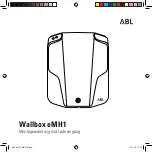
||
DRIVER SUPPORT
* Option/accessory.
380
3. Be prepared to stop the vehicle when
instructed to do so by a graphic and mes-
sage in the center display. Follow the
instructions in the same way as for the
parking procedure.
Note that the steering wheel can "spring"
back when the procedure is completed and
the driver may need to turn the steering wheel
back to the maximum position in order to pull
out of the parking space.
If the function determines that the driver can
pull out of the parking space without any extra
maneuvers, the function will be deactivated,
even if it seems as though the vehicle is not
completely out of the parking space.
Related information
•
•
Park Assist Pilot
*
limitations
Park Assist Pilot (PAP
104
) may not be able to
detect all conditions in all situations and func-
tionality may therefore be limited.
WARNING
•
The parking sensors have dead/blind
spots where objects cannot be
detected.
•
Pay particular attention to people and
animals near the vehicle.
•
Bear in mind that the front end of the
vehicle may swing out towards oncom-
ing traffic during the parking maneuver.
Objects situated higher than the detection
area of the sensors are not included when
the parking maneuver is calculated, which
could cause the function to swing into the
parking space too early. Such parking
spaces should be avoided for this reason.
The driver should be aware of the following
limitations for Park Assist Pilot:
The parking sequence is cancelled
A parking sequence will be cancelled if:
•
the driver moves the steering wheel
•
the vehicle's speed exceeds 7 km/h
(4 mph)
•
the driver taps
Cancel
in the center dis-
play
•
when the anti-lock brakes or the Elec-
tronic stability control are engaged - e.g.
when a wheel loses grip on a slippery road
•
when speed-dependent power steering
wheel resistance is working at reduced
power – e.g. during cooling due to over-
heating.
A message in the center display will explain
why the parking sequence was cancelled.
Under certain circumstances, the function
may not be able to find parking spaces –
one reason may be that the sensors are
disrupted by external sound sources that
emit the same ultrasonic frequencies that
the system works with.
Examples of such sources include horns,
wet tires on asphalt, pneumatic brakes,
exhaust noise from motorcycles, etc.
104
Park Assist Pilot
Summary of Contents for S60 Twin Engine 2020
Page 1: ...XC60 T W I N E N G I N E OWNER S MANUAL...
Page 2: ......
Page 17: ...15 INDEX Index 667...
Page 18: ......
Page 19: ...OWNER S INFORMATION...
Page 28: ......
Page 29: ...YOUR VOLVO...
Page 45: ...SAFETY...
Page 85: ...DISPLAYS AND VOICE CONTROL...
Page 156: ......
Page 157: ...LIGHTING...
Page 170: ......
Page 171: ...WINDOWS GLASS AND MIRRORS...
Page 188: ......
Page 189: ...SEATS AND STEERING WHEEL...
Page 205: ...CLIMATE CONTROL...
Page 237: ...KEY LOCKS AND ALARM...
Page 272: ...KEY LOCKS AND ALARM 270 Related information Alarm p 268...
Page 273: ...DRIVER SUPPORT...
Page 385: ...HYBRID INFORMATION...
Page 402: ......
Page 403: ...STARTING AND DRIVING...
Page 471: ...AUDIO MEDIA AND INTERNET...
Page 537: ...VOLVO ON CALL...
Page 539: ...WHEELS AND TIRES...
Page 570: ......
Page 571: ...LOADING STORAGE AND PASSENGER COMPARTMENT...
Page 590: ......
Page 591: ...MAINTENANCE AND SERVICE...
Page 654: ......
Page 655: ...SPECIFICATIONS...
Page 668: ......
Page 685: ......
Page 687: ...TP 28799 English USA Canada AT 1917 MY20 Copyright 2000 2019 Volvo Car Corporation...
















































